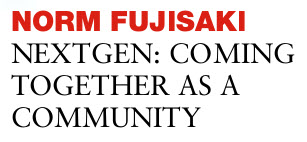 As RTCA Task Force 5 comes to a conclusion, I think it’s interesting to try to understand what it represents in the broader scheme of things.
As RTCA Task Force 5 comes to a conclusion, I think it’s interesting to try to understand what it represents in the broader scheme of things.
Everything in nature seems to seek equilibrium. Hot flows to cold, water seeks a common level, and industries and institutions tend to do the same thing. You achieve equilibrium and then things stop. NextGen, and NGATS before it, had been several years in the making, since 2003 to be exact. The creation of the Joint Planning Development Office to spearhead the planning and design of the next generation air transportation system in itself was a major disruption to an otherwise “business-as-usual” evolution of the nation’s Air Traffic Control system. It was to have been transformational to meet the tripling of traffic over the next 50 years. The tendency to revert to static equilibrium is so great that disruptions are needed on a regular basis to get things moving again. In fact, if we think about it, the Operational Evolution Plan, later renamed as the Operational Evolution Partnership, represented an internal FAA disruptor to sharpen the focus and push through a handful of key improvements needed to deliver earlier benefits to the users of the system. Back in the mid1990s, there was Free Flight and RTCA Task Force 3, another source of major disruption that finally led to the FAA creation of the Free Flight Office and the wider implementation of TMA, URET and other improvements.
On January 16, 2009, Hank Krakowski, the Chief Operating Officer of the FAA Air Traffic Organization (ATO), and Peggy Gilligan, FAA Associate Administrator for Aviation Safety (AVS), sent a letter to RTCA requesting that a government industry task force be established to forge community-wide consensus on the recommended NextGen operational improvements to be implemented during the transition between now and 2018. It’s no secret that there had been long-standing discontent about the need to show more visible progress on the NextGen front. In fairness, progress had been made in the definition of a future operational concept, operational improvements and required work and schedules to deliver improvements, but not enough progress in terms of movement toward delivering visible, “no-kidding” improvements and benefits — too much paper and not enough action. Yet, the type of progress made on NextGen, coupled with the steadily worsening condition of the system, produced sufficient support to finally gain budgetary increases from the Hill. Federal stimulus thinking didn’t hurt either, since NextGen looks a lot like infrastructure and infrastructure renewal generally produces a lot of jobs. But, political support for almost anything is a fragile thing. So, to preserve the support for NextGen funding, it will be vital to get the entire aviation community behind NextGen. It will be important to reduce the potential for detractors and distractions. Using RTCA and its proven and accepted method to forge aviation community consensus seemed to be a natural step to take to bridge the unhappiness about slow progress.
As well as RTCA Task Forces have worked, they often don’t turn out exactly the way things are envisioned at the outset. Take RTCA Task Force 3 for instance. It started out as a white, silk scarf concept. Bill Cotton of United Airlines had a vision of a future system where pilots could fly more freely without air traffic control directing them every step of the way. Bert Rutan had similar ideas, as did Glenn Gilbert well before Rutan. But, by the time RTCA brought the community together and people really engaged and tried to determine what was feasible and what really could be done in any reasonable time, the consensus was to recommend some 70 odd actions to implement improvements to the system that bore little resemblance to Bill Cotton’s original free flight idea. RTCA Task Force 5 experienced some of the same kind of unpredictability. In the beginning, what was envisioned was a robust, data-driven approach. It was to have been a fully transparent and quantitative process that would allow anyone to see and understand the basis for each final conclusion and recommendation. Well into the quantitative process, it became apparent that there was very little in the way of quantitative data and analysis to guide the conclusions. So, the process was re-engineered on the fly to gather the users of the system to try to distill clear consensus on what the near term emphases should be for NextGen. The users relied to some extent on the available analyses and data, as well as recorded subjective opinions, that had been compiled against each candidate operational capability. But, in the end, the consensus of the user community represented a distillation of the obvious – obvious near term improvements within the NextGen framework that will produce early and significant operational and economic benefits. It was a masterful recovery on the part of RTCA and the Task Force 5 leaders.
On balance, RTCA Task Force 5 isn’t too far off-course from previous NextGen plans. There is a lot of consistency. But, the recommendations go a long way toward focusing NextGen implementers on a smaller set of priorities that are most greatly valued by the users of the system. Some people will view the RTCA Task Force 5 recommendations as an unwelcomed disruption to their current plans. Instead, they should think about embracing the recommendations and treat them as a gift. Placing priority on these recommendations will serve to keep the entire aviation community together, speaking positively with one voice, to preserve and perhaps build even greater support for funding improvements envisioned under NextGen.






Connect
Connect with us on the following social media platforms.